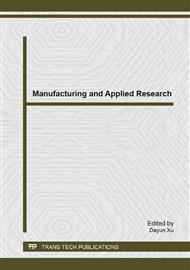p.50
p.54
p.58
p.63
p.67
p.72
p.77
p.83
p.88
Use of CrN Passivation for Fabricating Al Micro-Materials by Electromigration
Abstract:
The technique for fabricating Al micro-materials using a conductive passivation film by electromigration (EM), which is the physical phenomenon of atomic transport with high-density electron flow, has been reported. Conductive passivation film precludes the unplanned hillock formation and substantially simplifies the sample preparation time for fabricating Al micro-materials by EM. To date, TiN that is electrical conductive material has been used as a passivation film. However, the TiN passivation oxidizes during heat and current test for fabricating Al micro-materials by EM because of inherent poor oxidation resistance of TiN. Oxidation of passivation causes a problem that applying current occasionally becomes difficult. The present paper proposes a new conductive passivation made of CrN for fabricating Al micro-materials by EM. CrN is used as a countermeasure against the oxidation problem. Additionally, the growth of Al micro-materials by EM is investigated in the relation with the experimental conditions of current and substrate temperature. As a result, we report that the fabrication of Al micro-materials using the CrN passivation is successfully demonstrated in the relation with the experimental conditions.
Info:
Periodical:
Pages:
67-71
Citation:
Online since:
March 2014
Authors:
Price:
Сopyright:
© 2014 Trans Tech Publications Ltd. All Rights Reserved
Share:
Citation:


